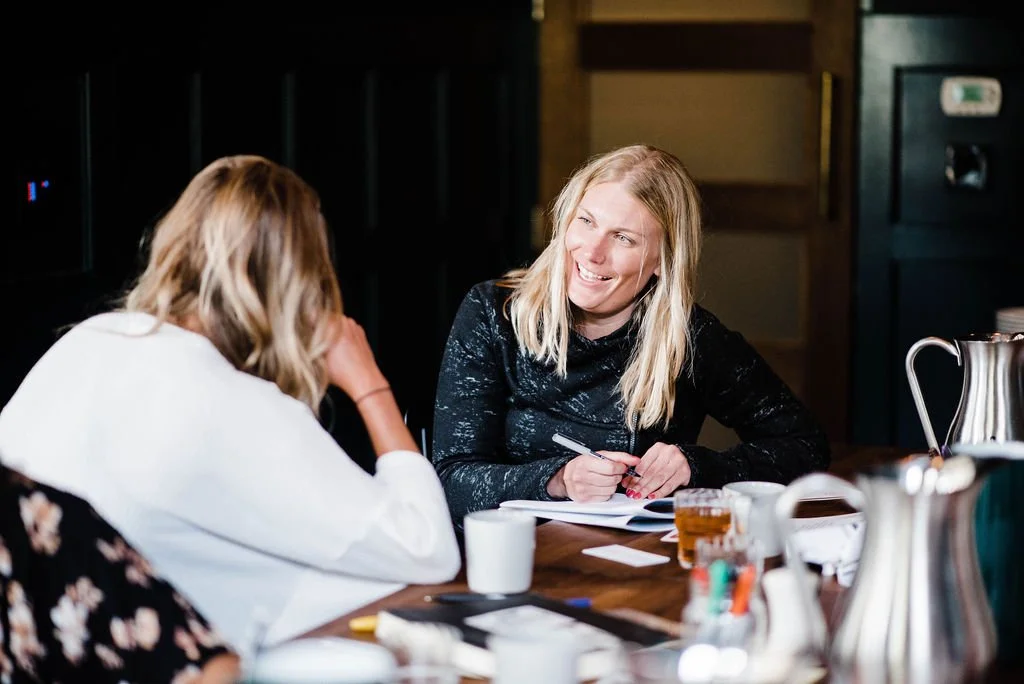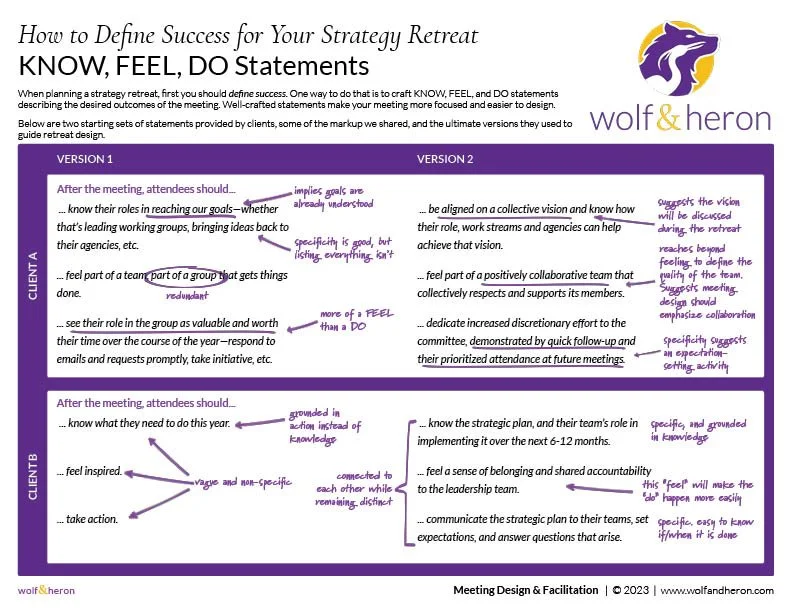Plan the Best Strategy Retreat of Your Career - Part 1: Define Success
The most important thing you need to do once you’ve broadly identified the need for a strategy retreat is to define success. There are a few ways to do this, but the crux of this step is to make sure you and your team are aligned on the “why” for the retreat. Why is it happening? Why should people show up? Why should they care? Why should they contribute? Don’t just focus on the routine… we’re meeting because that’s what we do every year. Instead, aim to uncover why this retreat specifically needs to happen this year. Although you may already have a cursory idea of agenda topics, this step should take you beyond thinking about “what” you’re doing, and bring focus and sophistication to your meeting design.
Draft the Know, Feel, Do
Open up a blank planning document or piece of paper that you’ll use to take notes. At the top, write:
At the end of this meeting, attendees should...
KNOW…
FEEL…
DO…
Then complete the statements.
Begin with a rough draft to get some words on paper. Then do your best to make these statements as specific as possible. Instead of something like, at the end of this meeting, attendees should take action, be specific about exactly what action they should take. For example, if the objective of the meeting is to encourage leaders to have better relationships with their direct reports, consider something like, at the end of this meeting, attendees should block time on their calendars to connect one-on-one with each member of their team before the end of the month. The more specific you can make your stated goals, the more refined and focused your meeting will be, and the easier it will be to design.
Gather Input
It’s easy to get caught up in what you (or your boss, or the planning committee) think the meeting should be about. Check your perspective against others by conducting interviews with the expected attendees. Without having an exact register of who will be invited or not, you probably already have a general sense of who will (or should) be there. Pick a few folks from the group and ask them a series of questions aimed at finding out the critical issues that need to be discussed, prioritized, decided upon, etc.
Potential Interview Questions:
What are our three most important strategic priorities today?
What is the biggest barrier to achieving our goals? Internal or External?
What is the organization/team’s greatest strength?
What is the organization/team’s greatest opportunity?
When you think about the work we do, what makes you most excited?
What is absolutely critical to include in the agenda?
What should people know, feel and do as a result of the retreat?
What else should I know?
Gathering input ahead of time is critical to avoiding side-conversations or unexpected twists in the discussion that could seriously derail your agenda during the retreat, and potentially impact productivity. By gathering input, you will know ahead of time which topic areas need air time and where the priorities are. Additionally, by checking in with everyone in advance, you “warm up the room” even before the retreat starts.
Synthesize Your Findings and Refine the KNOW, FEEL, and DO
Once you’ve gathered input, go back to your planning document and write down your main takeaways from the interviews. Note down themes that bubbled up, or areas where everyone seemed to have a different opinion. Consider questions like these:
What are the issues that everybody called out?
What are the areas of potential misalignment?
What are the individual and group expectations?
Where are the areas where people are excited to contribute or collaborate?
What is the story that’s starting to manifest?
Then, review your KNOW, FEEL, and DO statements. Ask yourself if anything should change now that you’ve gathered input. Take a moment and revise those statements based on the increased clarity you have around the “why” of the meeting and what success will look like.
In our work helping clients design their strategy retreats, we've come across lots of KNOW, FEEL, DO statements. Some are better than others. Download this one-pager if you’re interested in some examples of statements we've seen in the past, and how we've improved upon them so they can better guide the design of the retreat.
This article is Part 1 of a 4-part series: Plan the Best Strategy Retreat of Your Career.
Here is the full set of articles from the series:


